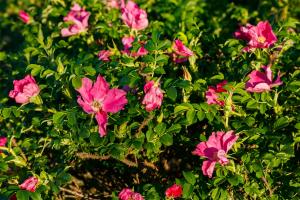When to Plant Russian Olive Tree
Russian olive (Elaeagnus angustifolia) is a deciduous tree commonly grown for ornamental and fruit purposes. With its attractive silver-grey leaves and fragrant yellow flowers, Russian olive tree can provide a stunning display in any landscape. If you are planning to add this tree to your garden, it's crucial to know the best time to plant it to ensure success.
The Best Time to Plant Russian Olive Tree
The best time to plant Russian olive tree is during the fall or spring season. These seasons offer ideal conditions for the tree to establish roots and grow healthily. Planting in fall allows the tree to establish its roots before winter, while planting in spring lets the tree take full advantage of the growing season. However, it's important to avoid planting during the hottest months of summer, where extreme heat can shock and damage the growing tree.
Preparing to Plant Russian Olive Tree
Before planting Russian olive tree, consider the following factors:
Soil type: Russian olive tree grows best in well-drained soil, rich in nitrogen and phosphorous.
Exposure: The tree requires full sunlight to grow and produce fruit.
Climate: Russian olive is drought-tolerant and can grow in a wide range of climates, but it thrives best in areas with hot, dry summers.
Once you have selected the right planting site, prepare the soil by adding organic matter, such as compost, to improve soil fertility and nutrient levels. This will help the tree establish its root system quickly and grow healthy.
Planting Russian Olive Tree
Follow these key steps when planting Russian olive tree:
Dig a hole three times wider than the root ball of the tree.
Line the bottom of the hole with a layer of compost to improve soil fertility and nutrient levels.
Place the tree in the hole and backfill with soil, ensuring that the tree is planted at the same level it was previously planting in the pot or container.
Water the tree thoroughly and use mulch to retain moisture and suppress weed growth.
It's essential to water the tree regularly for the first few months after planting to help the tree establish its root system. Russian olive tree does not require frequent watering once it has established, but it's crucial to water it during dry spells, particularly in summer.
Conclusion
Planting Russian olive tree requires careful consideration of various factors such as soil type, climate, and planting site. By planting in the fall or spring, preparing the soil beforehand, and following proper planting techniques, you can ensure that your Russian olive tree thrives and provides you with years of ornamental and fruit enjoyment.

 how many times do yo...
how many times do yo... how many planted tre...
how many planted tre... how many pine trees ...
how many pine trees ... how many pecan trees...
how many pecan trees... how many plants comp...
how many plants comp... how many plants can ...
how many plants can ... how many plants and ...
how many plants and ... how many pepper plan...
how many pepper plan...






























